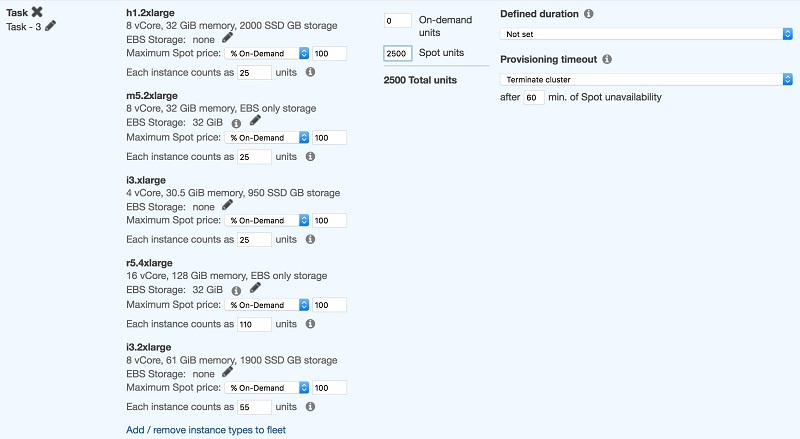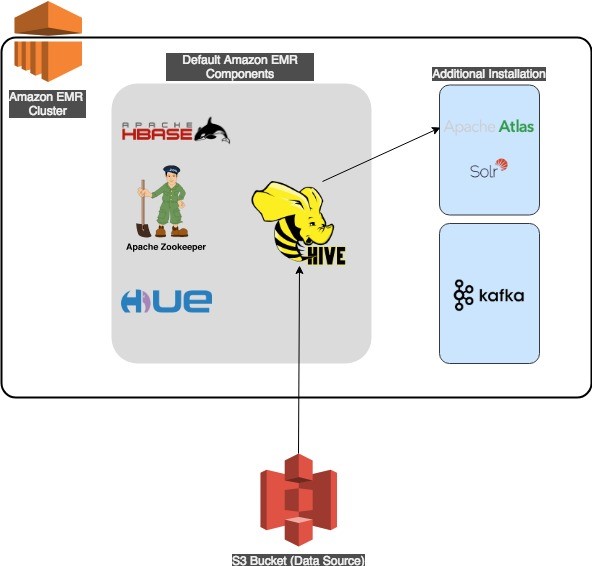AWS Big Data Blog
Category: Amazon EMR
Amazon EMR Migration Guide
Today, we’re introducing the Amazon EMR Migrations Guide (first published June 2019.) This paper is a comprehensive guide to offer sound technical advice to help customers in planning how to move from on-premises big data deployments to EMR.
Optimize downstream data processing with Amazon Data Firehose and Amazon EMR running Apache Spark
This blog post shows how to use Amazon Kinesis Data Firehose to merge many small messages into larger messages for delivery to Amazon S3, which results in faster processing with Amazon EMR running Spark. This post also shows how to read the compressed files using Apache Spark that are in Amazon S3, which does not have a proper file name extension and store back in Amazon S3 in parquet format.
Trigger cross-region replication of pre-existing objects using Amazon S3 inventory, Amazon EMR, and Amazon Athena
In Amazon Simple Storage Service (Amazon S3), you can use cross-region replication (CRR) to copy objects automatically and asynchronously across buckets in different AWS Regions. CRR is a bucket-level configuration, and it can help you meet compliance requirements and minimize latency by keeping copies of your data in different Regions. CRR replicates all objects in […]
EMR Notebooks: A managed analytics environment based on Jupyter notebooks
Notebooks are increasingly becoming the standard tool for interactively developing big data applications. It’s easy to see why. Their flexible architecture allows you to experiment with data in multiple languages, test code interactively, and visualize large datasets. To help scientists and developers easily access notebook tools, we launched Amazon EMR Notebooks, a managed notebook environment […]
Test data quality at scale with Deequ
In this blog post, we introduce Deequ, an open source tool developed and used at Amazon. Deequ allows you to calculate data quality metrics on your dataset, define and verify data quality constraints, and be informed about changes in the data distribution. Instead of implementing checks and verification algorithms on your own, you can focus on describing how your data should look.
Optimize Amazon EMR costs with idle checks and automatic resource termination using advanced Amazon CloudWatch metrics and AWS Lambda
Many customers use Amazon EMR to run big data workloads, such as Apache Spark and Apache Hive queries, in their development environment. Data analysts and data scientists frequently use these types of clusters, known as analytics EMR clusters. Users often forget to terminate the clusters after their work is done. This leads to idle running […]
Best practices for running Apache Spark applications using Amazon EC2 Spot Instances with Amazon EMR
In this blog post, we are going to focus on cost-optimizing and efficiently running Spark applications on Amazon EMR by using Spot Instances. We recommend several best practices to increase the fault tolerance of your Spark applications and use Spot Instances. These work without compromising availability or having a large impact on performance or the length of your jobs.
Improve Apache Spark write performance on Apache Parquet formats with the EMRFS S3-optimized committer
The EMRFS S3-optimized committer is a new output committer available for use with Apache Spark jobs as of Amazon EMR 5.19.0. This committer improves performance when writing Apache Parquet files to Amazon S3 using the EMR File System (EMRFS). In this post, we run a performance benchmark to compare this new optimized committer with existing committer […]
Spark enhancements for elasticity and resiliency on Amazon EMR
This blog post provides an overview of the issues with how open-source Spark handles node loss and the improvements in Amazon EMR to address the issues.
Metadata classification, lineage, and discovery using Apache Atlas on Amazon EMR
This blog post was last reviewed and updated April, 2022. The code repositories used in this blog have been reviewed and updated to fix the solution With the ever-evolving and growing role of data in today’s world, data governance is an essential aspect of effective data management. Many organizations use a data lake as a […]









